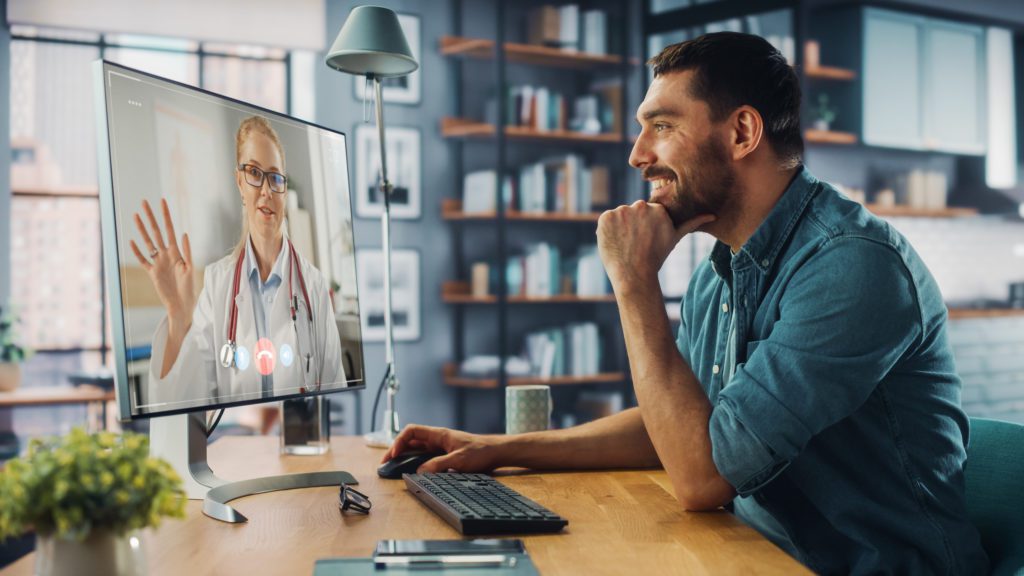As technological advances continue to emerge, technology permeates our lives more than ever. Every industry, including health and medicine, has been upended and transformed. Remote patient monitoring is an important tool that clinicians are increasingly utilizing as the COVID-19 pandemic progresses. During these difficult times, such tools have kept the healthcare system running and ensured that patients receive a continuum of care. Remote patient monitoring shifts healthcare away from its traditional setting and into the comfort of people’s homes. The use of these technologies also ensures the creation of a link between the traditional physical setting and where people want to be on a daily basis. As a result, while remote patient monitoring has undeniably improved patient care, the question is whether it can facilitate it.
There is a widespread belief that implementing technology, such as remote patient monitoring, will naturally result in improvements in healthcare. While any innovation may appear to progress, there are undoubtedly drawbacks to relying solely on remote patient monitoring. According to the Population Health Research Institute, remote patient monitoring demonstrates important patient outcomes such as the correction of medical errors and the reduction of postoperative pain. These results, however, vary depending on the level of care escalation by nurses and doctors working remotely with patients.
Here are some of the consequences that can occur if remote patient monitoring is not addressed and managed effectively.
Cyber Security Risks
Cybersecurity risk is more than just the exposure of personal information or the ransoms that are sometimes associated with data breaches. Risks associated with tampered data can have serious consequences. Patients and healthcare professionals who rely on data to make treatment decisions rely on accurate datasets. When data is deleted or altered, it can result in an incorrect diagnosis or treatment plan, as well as other negative outcomes.
This exemplifies one of the major drawbacks of remote patient monitoring in healthcare. Patients’ connected medical devices may be accessed with the intent of changing functionality if proper security protocols are not followed. In the worst-case scenario, serious device malfunction in life-or-death situations occurs.
Fortunately, no documented cases of medical devices being hacked for such purposes have been documented, but it is important to remember those telehealth organizations that implement an effective data protection strategy ensure that patient’s information is kept secure. Multi-factor authentication, application data encryption, remote locking of lost or stolen phones, and regular software updates, including safety applications and medical sensor control systems, are critical for protecting and securing patient data. It is also important to look for OTN Verified solutions, such as aTouchAway, for added security assurance.
Lack of Empathy in Patient and Doctor Interaction
Remote patient monitoring has reduced healthcare costs by detecting potential problems early and avoiding complications later on. Remote patient monitoring also allows for the alleviation of clinician shortages, which have afflicted many countries, including Canada, particularly in rural areas.
However, the way technology has become the interface between patients and providers may cause problems. Working with dashboards on connected medical devices and computers takes away the human touch from treatment, resulting in a lack of perceived empathy during patient care. Using technology as the interface of care, especially for the elderly and the most vulnerable patients, can lead to confusion, treatment plans not being properly understood, or patient non-compliance.
Frustration With Poor Implementation
For technological advancements to benefit remote patient monitoring, systems must be accurate, simple to use, and ultimately improve on current patient care methods. It is critical for clinicians and doctors to ensure that the technology they use is simple to manage and understand rather than a burden.
Healthcare professionals who spend more time battling technology than providing patient care are more likely to dismiss the use of technology and future iterations. As artificial intelligence and machine learning become more common, it is critical that healthcare professionals understand the limitations of these technologies.
Recognizing When to Use Remote Patient Monitoring

It is critical to recognize that when providing remote patient monitoring, good technology is required to help identify problems. However, you will not change the outcome if you do not have a clear path for who and how those problems will be addressed, and if you do not change your management approach – you will not change the outcome. Nonetheless, as the healthcare industry remains adaptable in the face of a rapidly changing world, it is critical to recognize the benefits of remote patient monitoring. Reduced disease transmission risks, reduced strain on limited hospital resources, cost savings, improved patient outcomes, and faster access to better patient data all demonstrate that the healthcare industry is on the right track; all that is required is an understanding of the appropriate level of management required to facilitate progress and optimization for the future of remote patient monitoring.
Thank you for reading. To stay up to date on current healthcare topics and news about Aetonix, subscribe to our mailing list at the bottom of our blog page. Connect with us on social media using the links at the bottom of this page and share your thoughts!



